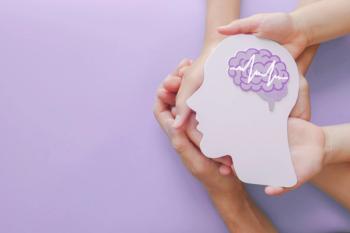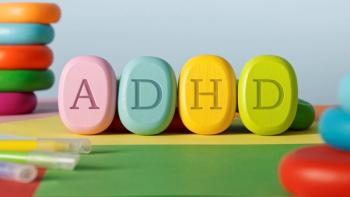
- Vol 39, Issue 12
Beyond “Bad Behavior”: ADHD in Clinical Practice
Take a look at this bread-and-butter case of ADHD from a child psychiatry clinic.
TALES FROM THE CLINIC
In this installment of Tales From the Clinic: The Art of Psychiatry, we look at a bread-and-butter case of attention-deficit/hyperactivity disorder (ADHD) from a child psychiatry clinic. Although very common, this disorder is surrounded by multiple questions that research is just beginning to unravel. It is subject to gender-norming and differential referral and diagnosis rates in females versus males, and even though it is highly heritable,
Case Study
“Sophie” was an 8-year-old girl with no known psychiatric history who presented to the clinic for initial psychiatric evaluation accompanied by her mother, who had concerns about Sophie’s academic performance and behavior at school. Her mother related that Sophie had always been an active child, but there were no concerns until she entered preschool. Since then, teachers had expressed growing concern regarding Sophie’s behavior in the classroom. Teachers previously had recommended seeking psychiatric evaluation for possible ADHD, but her mother declined. The school provided accommodations under the 504 Plan, but Sophie continued to have a difficult time. Her current teacher reported that Sophie had significant difficulty sustaining attention and needed frequent redirection because of her off-task and disruptive behavior. In addition, the teacher recently notified Sophie’s mother that Sophie was not performing at grade level and was at risk of repeating the grade. Consequently, Sophie’s mother decided to seek psychiatric evaluation.
On exam, Sophie was a well-nourished child without evidence of developmental delays. She discussed having trouble making friends at school because kids thought she was “weird.” She explained that she was easily distracted and found it difficult to stay in her seat during class, and that teachers often redirected her because she talked out of turn or loudly. She went on to discuss that she felt nervous at school sometimes because she worried about making mistakes and being ridiculed by classmates. She denied having other anxiety symptoms and described having euthymic mood except for occasionally feeling sad and lonely at school because she did not have any close friends. Psychiatric review of symptoms was otherwise negative. Sophie’s medical history was unremarkable. Regarding family history, it too was negative for medical or psychiatric illness except for father and paternal cousins with history of ADHD.
Collateral information was obtained by speaking to teachers and reviewing ADHD rating scales. History obtained from Sophie, her parents, and the teachers was indicative of ADHD combined type. Although teachers also reported that Sophie was not performing at grade level, they stated that she did very well when given 1-to-1 instruction and additional time to complete tasks.
After discussing treatment options, Sophie’s mother gave consent to begin a trial of methylphenidate hydrochloride ER. Sophie tolerated the 18-mg dose but remained symptomatic. The dose was gradually increased to 36 mg every morning, which controlled ADHD symptoms adequately in the morning, but she still needed redirection for off-task behavior in the afternoon. Methylphenidate immediate-release 5 mg was added at noon, and teachers reported resolution of ADHD symptoms in the afternoon. Sophie’s academic performance improved, and she was now receiving A’s and B’s. However, her mother was concerned that Sophie had suppressed appetite during the day. Her mother was advised to give medication only on school days and to provide calorically dense meals and snacks to prevent weight loss. The patient’s weight remained stable and within normal range, so her mother decided to continue the medication regimen.
Discussion
ADHD is a “persistent pattern of inattention and/or hyperactivity-impulsivity that interferes with functioning or development.”1 It is subclassified into 3 types: combined presentation, predominantly inattentive presentation, and predominantly hyperactive presentation. ADHD is one of the most common neurodevelopmental disorders of childhood, with a prevalence of over 5%.2 ADHD is highly heritable (80%),3,4 and males are more likely to receive a diagnosis of ADHD. The gender difference is presumably due to higher incidence of impulsive and disruptive behavior in boys, which leads to more frequent referrals.5
Although the exact cause of ADHD has yet to be identified, it has been associated with multiple neurophysiological deficits. Theoretical approaches integrate clinical symptoms and neuropsychological difficulties within a framework of certain brain dysfunctions.
ADHD is a clinical diagnosis, meaning there are no standard laboratory or imaging studies in ADHD.8 Evaluation for ADHD should consist of clinical interviews with the parent and patient; obtaining information about the patient’s school or day care functioning; evaluation for comorbid psychiatric disorders; and review of the patient’s medical, social, and family histories. The most common comorbidities include oppositional defiant disorder (ODD), conduct disorder,
Fortunately, treatment for individuals with ADHD is tremendously effective. Stimulant treatment is one of the best-studied interventions in child psychiatry, and the response rate can be as high as 90%.
Time needed to reach a therapeutic dose of medication can be affected by multiple factors such as
However, for severe cases or in individuals with significant comorbidities (eg, ODD, mood or anxiety disorders,
It is not uncommon for children to experience adverse effects from psychotropic medications. With stimulants, the most common adverse effects include appetite suppression and
Behavioral interventions for ADHD include evidence-based parenting interventions such as parent-child interaction therapy and the Incredible Years program. The core features of these are positive interventions that differentially reinforce desired behaviors and improve the quality of the parent-child attachment relationship. These interventions are indicated as first-line treatment for toddlers and preschool children. They are also indicated for older children with comorbid ODD or other behavioral or parenting concerns that are not core ADHD symptoms. In addition, school interventions such as the 504 Plan and individualized education program (IEP) are often utilized. The 504 Plan provides accommodation and support to allow students to make use of the general education setting. For those students identified as requiring special education, an IEP is drafted. An IEP outlines the special education instruction, supports, and services a student needs to succeed in school. Diagnosis and persistence of ADHD into adulthood is a different topic altogether, and much research is going on in that field.
Concluding Thoughts
ADHD is one of the most common neurodevelopmental disorders of childhood. It is highly heritable and more diagnosed in males. However, the exact cause for it is not known. The diagnosis of ADHD is a clinical one; therefore, it is necessary to obtain a thorough history from parents, patients, and teachers. Treatment is the same regardless of the patient’s ADHD subtype, and stimulant medications are usually the most effective form of treatment. For patients with comorbidities,
As mental health providers, it is imperative that we educate families about the importance of managing ADHD. We must serve as advocates for our patients to ensure that they receive an adequate education and have access to resources to reduce the incidence of comorbid psychiatric illness, substance use disorders, relational or legal problems, and employment and financial instability.
Dr Nazario is an assistant professor of psychiatry and behavioral sciences at Baylor College of Medicine in Houston, Texas.
References
1. Diagnostic and Statistical Manual of Mental Disorders, Fifth Edition. American Psychiatric Association; 2013.
2. Drechsler R, Brem S, Brandeis D, et al.
3. Grimm O, Kranz TM, Reif A.
4. Mowlem F, Agnew-Blais J, Taylor E, Asherson P.
5. Slobodin O, Davidovitch M.
6. Albrecht B, Uebel-von Sandersleben H, Gevensleben H, Rothenberger A.
7. Arnett AB, McGrath LM, Flaherty BP, et al.
8. Wolraich ML, Hagan JF Jr, Allan C, et al; Subcommittee on Children and Adolescents With Attention-Deficit/Hyperactive Disorder.
9. Shaw M, Hodgkins P, Caci H, et al.
10. Stahl SM. Stahl’s Essential Psychopharmacology: Neuroscientific Basis and Practical Applications, Fifth Edition. Cambridge University Press; 2021.
Articles in this issue
about 3 years ago
Current Treatments for Cannabis Use Disorderabout 3 years ago
The Importance of Cherishing the Older Adults in Your Lifeabout 3 years ago
Dementia in the Newsabout 3 years ago
Beyond Counting Sheep: Helping Patients With Insomniaabout 3 years ago
Eight Best Practices for Medical Malpractice Defenseabout 3 years ago
Psychopharmacology Conference Offers New Research, Prescribing Tipsabout 3 years ago
Use of Antipsychotics: Risks of Tardive Dyskinesiaabout 3 years ago
On TransienceNewsletter
Receive trusted psychiatric news, expert analysis, and clinical insights — subscribe today to support your practice and your patients.

















